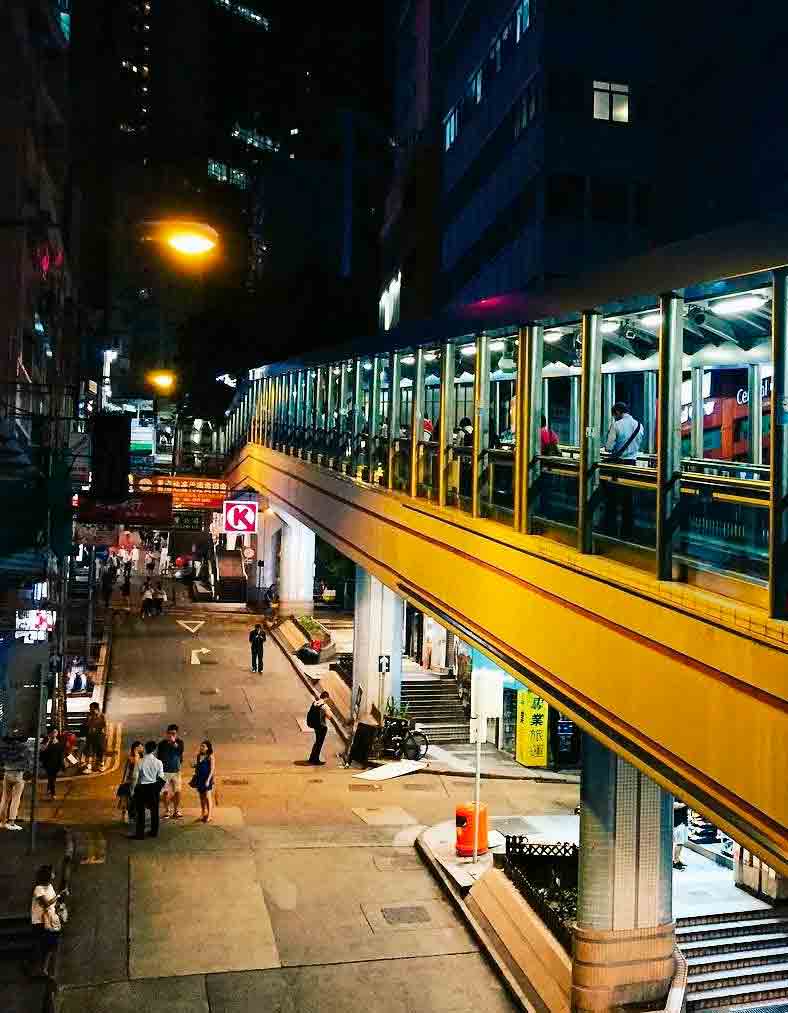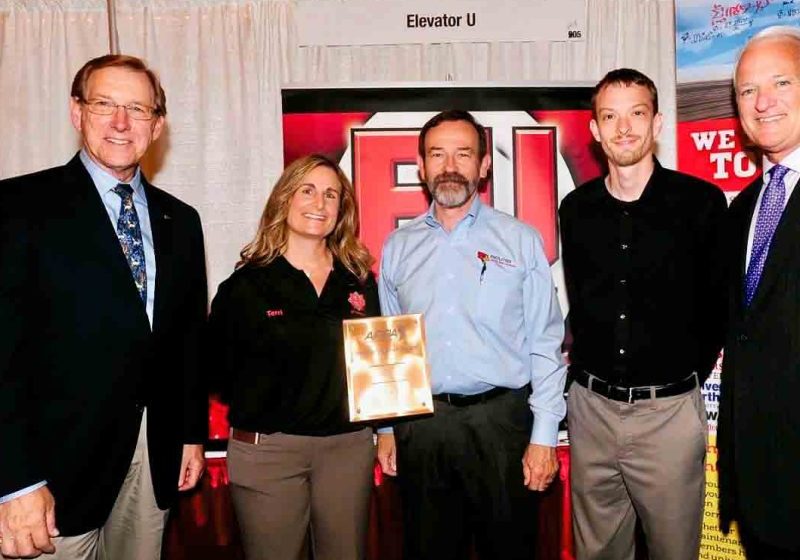Feat of Engineering
Nov 1, 2017

Hong Kong local authority taps Anlev to replace world’s longest covered escalator system, a main transportation artery and attraction in itself.
Traversing a hillside between Hong Kong Island’s Central and Western districts, the Mid-Level Escalator Link (MLEL) is a remarkable sight that offers a one-of-a-kind experience. Thousands of residents use it every day, and, since opening in 1993 (ELEVATOR WORLD, June 1994), it has brought new life to the area above the city’s famed Hollywood Road: With the people came many new restaurants at the elevated level to serve them. It attracts tourists, too.
At age 25, the Central to Mid-Levels Escalator and Walkway System is due to be replaced. The local authority knew it had to call on a company with the expertise to handle the complex, five-year project, which involves replacing 18 sets of escalators and three sets of moving walks originally manufactured by Constructions Industrielles de la Méditerranée (CNIM). The US$15-million project is one of the largest for a single vertical-transportation project awarded in recent memory, states Anlev Sales Manager Samuel Cheng. He elaborates:
“The link connects the downhill (sea-level) side to the mid hillside. The whole system is 800 m in distance and elevates over 135 m. It is a very high-profile project in Hong Kong, because the link is an attraction, and a huge number of people use it every second. In awarding this project, the local authority considered the technical background, reputation of the contractor, reliability of the product, performance rating and price.
“You need to have full confidence in your equipment, your installation team and your maintenance crew, as no mistakes are allowed for this kind of project. Equipment reliability is so important because of high usage. The system operates 18 hr. a day, seven days a week. Estimated daily traffic exceeds 55,000 passengers. Further, the equipment needs to last for at least another 20 years under semi-outdoor, humid, hot conditions.”
Anlev points out that, as a business unit of Atal Engineering Group, which employs approximately 2,700, it is no stranger to big jobs, including:
- Building/maintaining water and sewage-treatment plants for the Hong Kongese and Chinese authorities
- Providing a range of building services to the region’s biggest casinos, shopping malls, commercial and government buildings
- Building/maintaining data centers for the biggest telecom companies
- Building/maintaining electronic checkpoints for customs for the Hong Kongese authority
To minimize disruption to the public and allow Anlev to focus on the project’s intricacy, which brings to mind a Jenga puzzle, the work has been divided into 12 sections, with each section involving one to three units. Roughly four to five months will be allotted for each section. One remarkable feature of seven of the units is their rise. Cheng states:
“17.5˚ rising-angle escalators — Have you ever heard about or seen it before? It is so special that the height of each step is very short compared to a standard step. There are also three walkways at 8.1˚, 11.94˚ and 11.68˚, with the other 11 escalators the standard 30˚. Anlev was confident it could handle this job, because we have built 20˚ and 22˚ escalators for the utility before.”
All escalators have 1,000-mm-wide steps and travel at 0.65 mps. The highest escalator is 13.4 m, and the longest moving walk is 64.1 m.
Before demolition of the CNIM system begins, Anlev submitted drawings, equipment samples and plans for where to put elements such as indicators, emergency-stop switches and key switches to the local authority. Full discussions were held between Anlev and professional engineers to ensure Anlev understood the requirements. Four public forums were also held. Anlev hoped to have its drawings and samples for the first phase approved in September and complete the escalators for that phase by January 2018 in its factory. Then, Anlev planned to perform a detailed inspection and trial runs, and deliver the equipment in February. Anlev is scheduled to complete the project in August 2022.
This process will happen for each section. Because the project is so complex, additional safety measures will be taken, Cheng states, including:
- Longer inspection/trial run times compared with other projects
- In addition to being inspected by Anlev’s quality-control department, its in-house engineering team from Hong Kong will inspect all units before shipment.
- Formation of a special safety team, including a registered safety officer, to run the project and make sure all equipment is in safe working order and prepare a full risk assessment
- Employment of a public-relations team to communicate with shops near the jobsite and deliver leaflets about work dates and how Anlev plans to control passenger flow and reroute traffic
- Entirely cover the jobsite with flame-resistant material that separates equipment from the public
- Employ skilled workers who are thoroughly trained in safety
- Perform unannounced safety checks throughout the project
- Share all reports with the project’s head of safety and top managers
Anlev’s engineering team has its work cut out for it, particularly in determining where to place nearly two dozen machines that will power the units in the MLEL. A detailed project description Anlev prepared for the local authority goes on for many pages. It includes a detailed plan for placement of the machines, which will be going in heavily traversed areas, such as the various access points to Jamia Mosque and the elevated walk above Hollywood Road.
The presentation shows that two types of escalator balustrades will be used: glass and stainless steel. These balustrades will interface seamlessly with the brick staircases that adjoin the escalators, and, at times, have to weave through very narrow clearances between the escalator and wall.
There is no denying this project will be packed with challenges. Cheng notes the new trusses will have to be lowered into shallow, narrow pits, and the crew will have to work around obstacles such as a bridge canopy that cannot be removed. All this will have to be done in a location bustling with activity. Cheng says:
“The existing area is very crowded. There are lots of pubs, shops, shopping malls and residential buildings. Lots of people use the [MLEL] to go between mid hill and downhill. It is going to be very challenging to replace the equipment in this busy area.”
Get more of Elevator World. Sign up for our free e-newsletter.








